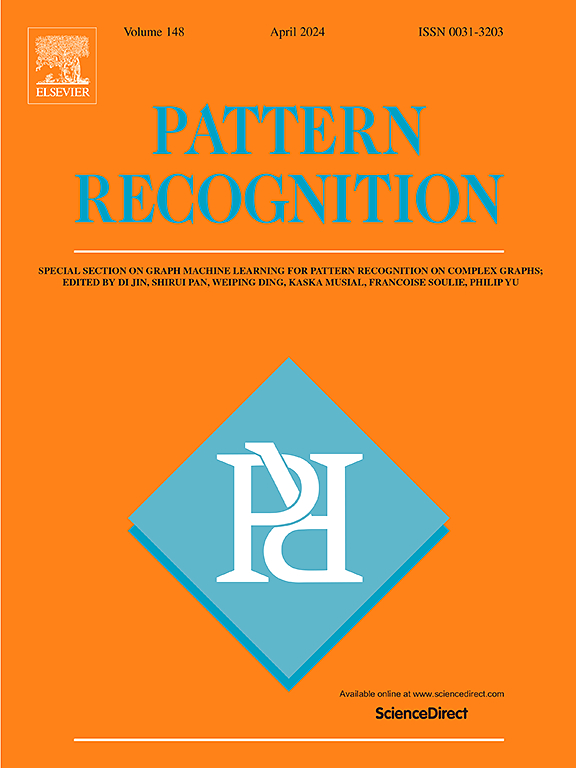HTCSigNet: A Hybrid Transformer and Convolution Signature Network for offline signature verification
IF 7.5
1区 计算机科学
Q1 COMPUTER SCIENCE, ARTIFICIAL INTELLIGENCE
引用次数: 0
Abstract
For Offline Handwritten Signature Verification (OHSV) tasks, traditional Convolutional Neural Networks (CNNs) and transformers are hard to individually capture global and local features from signatures, and single-depth models often suffer from overfitting and poor generalization problems. To overcome those difficulties, in this paper, a novel Hybrid Transformer and Convolution Signature Network (HTCSigNet) is proposed to capture multi-scale features from signatures. Specifically, the HTCSigNet is an innovative framework that consists of two parts: transformer and CNN-based blocks which are used to respectively extract global and local features from signatures. The CNN-based block comprises a Space-to-depth Convolution (SPD-Conv) module which improves the feature learning capability by precisely focusing on signature strokes, a Spatial and Channel Reconstruction Convolution (SCConv) module which enhances model generalization by focusing on more distinctive micro-deformation features while reducing attention to common features, and convolution module that extracts the shape, morphology of specific strokes, and other local features from signatures. In the transformer-based block, there is a Vision Transformer (ViT) which is used to extract overall shape, layout, general direction, and other global features from signatures. After the feature learning stage, Writer-Dependent (WD) and Writer-Independent (WI) verification systems are constructed to evaluate the performance of the proposed HTCSigNet. Extensive experiments on four public signature datasets, GPDSsynthetic, CEDAR, UTSig, and BHSig260 (Bengali and Hindi) demonstrate that the proposed HTCSigNet learns discriminative representations between genuine and skilled forged signatures and achieves state-of-the-art or competitive performance compared with advanced verification systems. Furthermore, the proposed HTCSigNet is easy to transfer to different language datasets in OHSV tasks.2
HTCSigNet:用于离线签名验证的混合变换器和卷积签名网络
对于离线手写签名验证(OHSV)任务,传统的卷积神经网络(CNN)和变换器很难单独捕捉签名的全局和局部特征,而且单深度模型往往存在过拟合和泛化能力差的问题。为了克服这些困难,本文提出了一种新颖的混合变换器和卷积签名网络(HTCSigNet)来捕捉签名中的多尺度特征。具体来说,HTCSigNet 是一个创新框架,由两部分组成:变压器和基于 CNN 的模块,分别用于从签名中提取全局和局部特征。基于 CNN 的区块包括一个空间-深度卷积(SPD-Conv)模块,该模块通过精确关注签名笔画来提高特征学习能力;一个空间和通道重构卷积(SCConv)模块,该模块通过关注更独特的微变形特征同时减少对常见特征的关注来提高模型泛化能力;以及一个卷积模块,该模块可从签名中提取形状、特定笔画的形态和其他局部特征。在基于变换器的模块中,有一个视觉变换器(ViT),用于从签名中提取整体形状、布局、大方向和其他全局特征。在特征学习阶段之后,为了评估 HTCSigNet 的性能,我们构建了依赖 WD(Writer-Dependent)和不依赖 WI(Writer-Independent)的验证系统。 在四个公共签名数据集 GPDSsynthetic、CEDAR、UTSig 和 BHSig260(孟加拉语和印地语)上进行的大量实验表明,HTCSigNet 能够学习真伪签名之间的区别表征,与先进的验证系统相比,HTCSigNet 的性能达到了一流水平或具有竞争力。此外,所提出的 HTCSigNet 很容易在 OHSV 任务中转移到不同的语言数据集。
本文章由计算机程序翻译,如有差异,请以英文原文为准。
求助全文
约1分钟内获得全文
求助全文
来源期刊

Pattern Recognition
工程技术-工程:电子与电气
CiteScore
14.40
自引率
16.20%
发文量
683
审稿时长
5.6 months
期刊介绍:
The field of Pattern Recognition is both mature and rapidly evolving, playing a crucial role in various related fields such as computer vision, image processing, text analysis, and neural networks. It closely intersects with machine learning and is being applied in emerging areas like biometrics, bioinformatics, multimedia data analysis, and data science. The journal Pattern Recognition, established half a century ago during the early days of computer science, has since grown significantly in scope and influence.
 求助内容:
求助内容: 应助结果提醒方式:
应助结果提醒方式:


